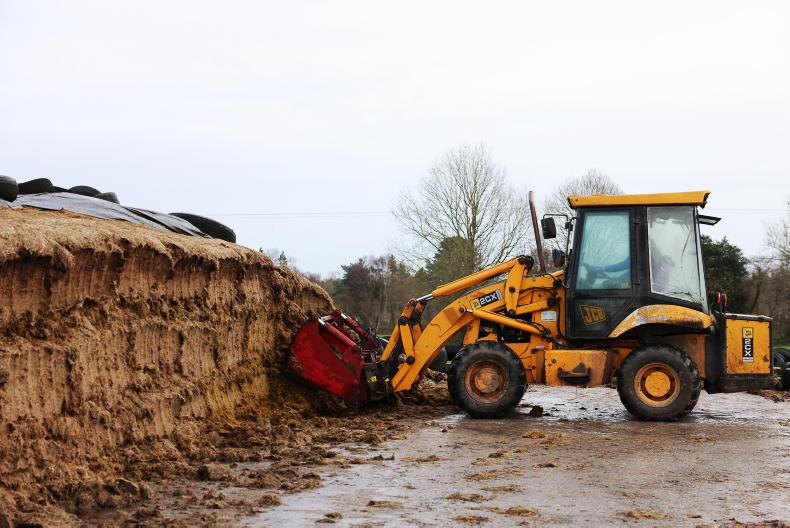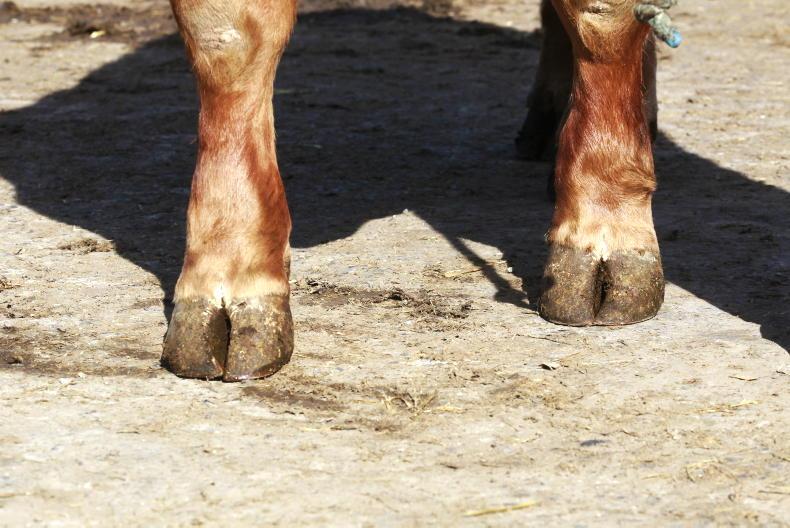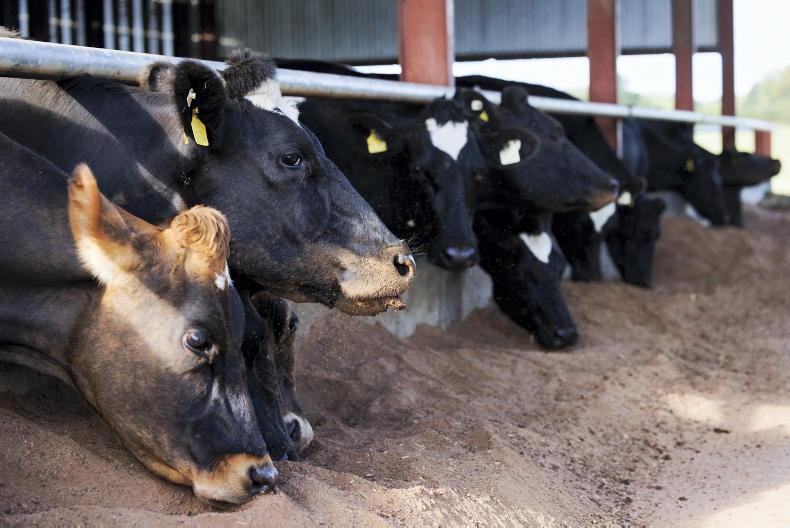While the national fodder situation is considered to be good, there are deficits on some farms, particularly dairy farms that suffered from poor grass growth due to drought-like conditions over the summer and early autumn.
The first step to dealing with this is to understand the scale of the deficit. A fodder budget should be completed which counts up all the silage in the yard and all the mouths to eat it. The deficit should be presented in terms of kilos of dry matter (DM) per cow per day, taking a typical housed period duration such as 10 to 12 weeks.
A typical dry dairy cow will eat around 12kg DM per day. If there is only enough silage on the farm for say 9kg silage per day, a decision has to be made as to what is going to fill that deficit.
Bought-in silage is available, but it comes at a price, particularly in the southeast where most of the problems are.
At €50/bale for silage, the actual cost per kilo of dry matter, presuming 200kg DM in a round bale of silage, is 25c/kg DM. To put that in context, a fodder stretcher nut costing €380/t fresh weight is costing €437/t DM or almost 44c/kg DM.
A fodder budget should be completed which counts up all the silage in the yard and all the mouths to eat it
Based on the above, you might say that buying silage is much better value than feeding expensive meal. However, this is not comparing like with like, because we don’t know the quality of the silage or indeed the quality of the meal.
For example, feeding poor-quality bought-in silage or hay to cows that are already over-fat will probably be a good thing, as it may mean they are at optimum body condition score by calving.
But feeding the same feed to cows that need to gain body condition score would be a big mistake, because it’s unlikely that they will gain condition on bad feed.
There is more certainty with feeding meal because quality is consistent and depending on how good the silage is, there could be an opportunity to feed less meal than the deficit suggests and still have well-fed cows. This will require silage to be tested and a feed plan drawn up based on nutritionist advice.
Restriction
The key thing when feeding meal to dry cows to stretch silage is to ensure that silage is restricted. Feeding meal on top of ad-lib silage will have a negligible impact on reducing silage intakes.
What this means in practice is that a grab of silage should be weighed and the dry matter ascertained to know how many kilos of dry matter is in each grab or bale.
Feed as many grabs or bales to each group as is required under the feed plan and do the same with meal. When the silage is gone, it’s gone, but provided the correct amount is given, the cows shouldn’t be hungry.
High-straw diets can also be fed where silage is very scarce. It is possible to feed as little as 3.5kg of silage dry matter to dry cows, in conjunction with 3kg of straw per cow per day and up to 5.25kg of meal, balanced for energy and protein.
While expensive relative to silage, this diet or variations of it may be useful where silage is very scarce, whereas hay, straw and meal are relatively plentiful, so at least feed is available.
Where high levels of meal are being fed and where silage is being restricted, the feed face becomes more critical because all cows should be able to eat at the one time in order to gain access to the meal.
In general, cows will need 700mm of barrier space per cow when silage is restricted.









SHARING OPTIONS